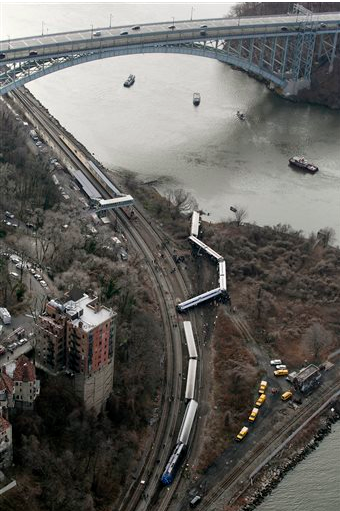Feds: Engineer in horrific NYC train derailment had sleep disorder

Screen Shot 2014-04-07 at 1.30.51 PM.png
WHITE PLAINS, N.Y.— The engineer on a New York commuter train that derailed at high speed last year, killing four people, had a serious sleep disorder that interrupted his rest dozens of times each night, federal investigators disclosed Monday.
The National Transportation Safety Board’s medical examination of engineer William Rockefeller uncovered “severe obstructive sleep apnea,” according to documents released by the agency.
The documents did not say whether the disorder contributed to the Dec. 1 crash on the Metro-North railroad. The NTSB said its analysis of the information and any determination of the cause would come in a later report.